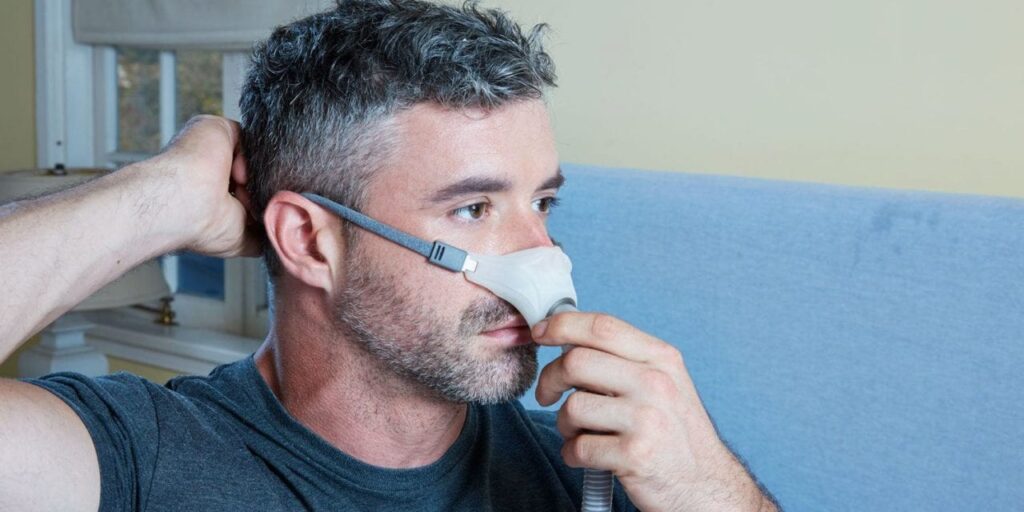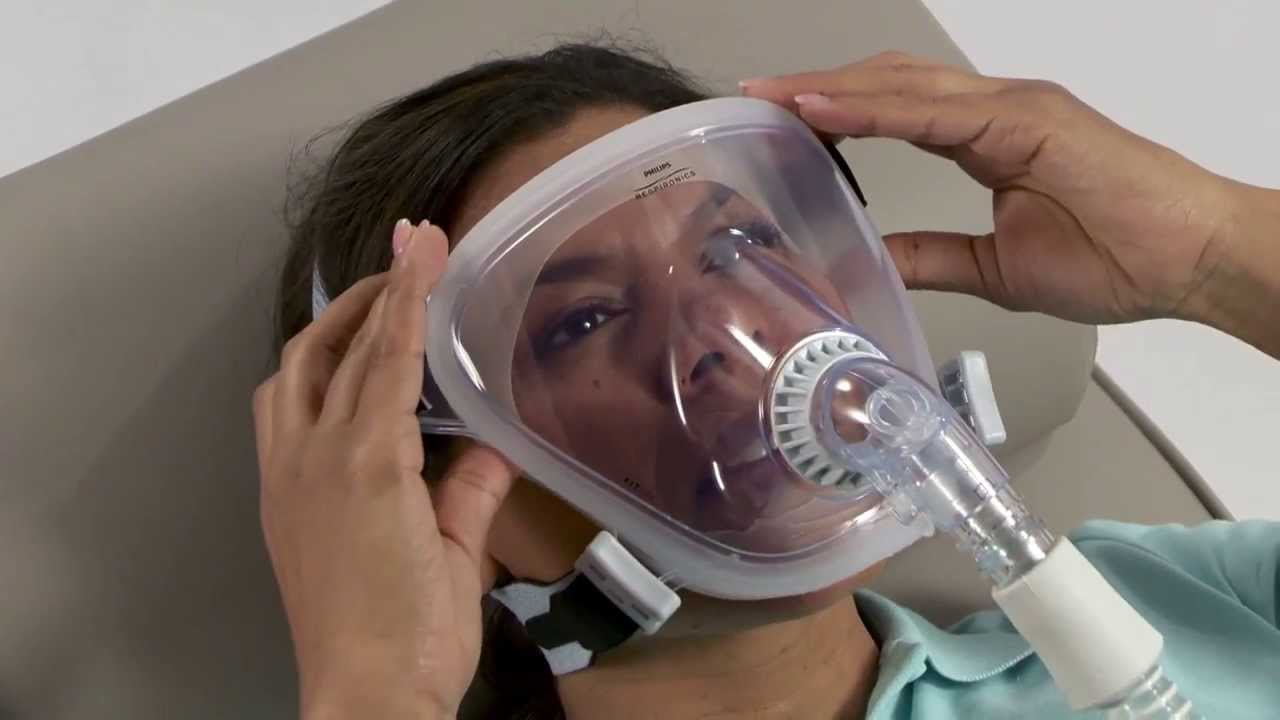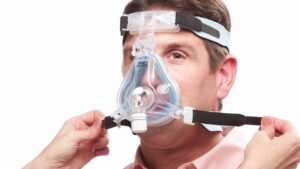Continuous positive airway pressure is referred to as CPAP. To keep your airway open, a CPAP machine utilizes CPAP masks to pump air into your nose or mouth. The disease known as sleep apnea, in which the airway frequently shuts while you are asleep, may be effectively treated with it.
Contrary to common misconception, cpap masks do not increase your oxygen intake; rather, it creates a current of regular air that maintains the open position of your upper airway and prevents it from closing.
Negative pressure, which is how normal breathing works, pulls air in by expanding the chest and creating a low-pressure area. The steady flow of air produced by CPAP, on the other hand, provides a strong, positive pressure that presses outward and forces the airways open. Learn more what are the risk factors for central sleep apnea?
A CPAP machine is made of what?
Any CPAP machine has these three essential parts:
- Stream generator
- Hose\s
- Mask
Air is forced into your airways by the generator via the hose, mask, and airways.
While the generator and tube are mostly interchangeable (apart from minor differences and features that are exclusive to each product, including humidifiers), the mask is the component that changes the most. The kind of mask that is most appropriate for you should be taken into account while being fitted for a CPAP machine.
The significance of a good match
When it comes to CPAP masks therapy, compliance is a major issue, with many users quitting after only a few nights. Therefore, even though CPAP may be quite efficient in treating sleep apnea and snoring, it is only beneficial when it is actually used.
People discontinue using CPAP masks for a variety of reasons, but pain is the main complaint. In one research, it was shown that 91% of participants stopped using their CPAP machine after three years.
I’ve gained a lot of knowledge about sleep apnea over the years since being diagnosed with it. Dealing with their CPAP masks is one of the primary issues that individuals have. Here are some suggestions to help you put on your mask and accept your situation better.

Choose the Proper Mask
Make sure you are wearing the appropriate mask for you. Pick the second mask that your CPAP provider offers you. To get the right mask for your requirements, try out a few different ones. You may pick from a variety of masks today. The nasal nose mask is the greatest option for me, therefore I wear it. A full face mask or another kind of mask could end up working best for you.
Speak with your healthcare practitioner, and don’t be hesitant to switch out your mask for one that performs better. You could decide to switch up your mask or try something new as time goes on. Avoid choosing CPAP masks that makes you uncomfortable since you won’t wear it as often as you would CPAP masks that fits properly.
Put on your mask Each Night
If you don’t use your CPAP mask every night, you’ll never become acclimated to it. Even when you don’t feel like wearing it, make it a practice to always wear your mask. Wearing the mask, which is half the fight won, might be challenging at first since it is something new and rather unfamiliar to your face.
Your habit of wearing CPAP masks will develop with continued usage. The mask should eventually become a natural part of your life, which is the goal. It must become a regular component of your bedtime routine. When you get there, everything else gets much simpler.
Relaxation
A significant factor is your concern with your mask. I am aware that this is accurate since I had severe mask anxiety. I repeatedly flung it off since I didn’t want it on my face. To wear the mask effectively, take some time to unwind before night.
To unwind as much as you can before bed, try reading, watching TV, having a bath, and other relaxing activities. Before you put on your mask, give yourself permission to feel a bit worn out. Wearing the mask won’t be as tough if you can lower your tension and anxiety levels.

Community Assistance
Joining a local support group is one of the finest things you can do if your mask is giving you trouble. Sometimes all we need to do is express our annoyance or ask a question. There are several excellent support forums online where you may obtain the help you need from individuals who understand your struggles.
When I have trouble with my mask or feel like giving up totally, I find that these communities are a huge support. I don’t know what I would have done without these incredible locations in the early stages of using my CPAP. If you wish to continue using your CPAP machine successfully, support is essential. These organizations may help you get over your bad days—we all have them.
Attempt again
The most important thing is to persevere and utilize your CPAP mask, no matter how challenging it may appear. I first believed I would never be able to wear the mask, but through persevering, I quickly learned that I could, and now it is a part of my routine.
Allow yourself some time to experiment with the mask. If you still have issues with your existing provider, you may always speak to them. The market currently offers a wide variety of mask solutions.
Major Points
- Choose the proper mask.
- Put it on each night.
- Unwind before applying your mask.
- Look for community support
- Persist in wearing your mask.
It’s normal to be frustrated with your mask. When I initially put CPAP masks on, I constantly fought with it. Give yourself time and get help if you need it. There is CPAP masks available that is appropriate for you. If you persevere, using your CPAP masks will eventually become a habit, and you’ll start to feel much better.
Final thoughts
Continuous positive airway pressure is referred to as CPAP. To keep your airway open, a CPAP machine utilizes CPAP masks to pump air into your nose or mouth. The disease known as sleep apnea, in which the airway frequently shuts while you are asleep, may be effectively treated with it.


